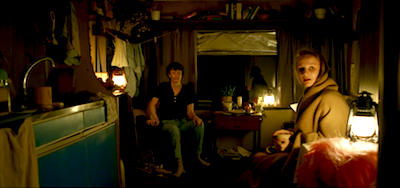|
Funkschatten |
Caren Wuhrer |
Germany / 2020 / 0:28:50 |
Alice, uncommunicative and electrohypersensitive, lives in seclusion in a dead zone deep in the Northern German forest. But then her hermitage is suddenly disturbed by the sex worker Lucia, who settles on the border of Alice's safe space with her lovemobile.
|
|

|
|
Wohin mit der Geschichte? |
Hans Christian Post |
Germany / 2020 / 1:30:00 |
The film deals with the catastrophes of the 20th century and their aftermath that the German city of Dresden has endured, but has relevance for all cities and countries that have suffered similar phases of destruction and conflict. The film shows the dramatic architectural losses of the city during the war and the post-war years, but also depicts how architecture is now again used to reinvent lost narratives and identities, and that this often happens at the cost of all the things - people, cultures and buildings - that do not conform to the new-old ideals of what Dresden is.
Dresden has in recent years grown both famous and infamous. Famous for its attempt to meticulously reconstruct its once bombed-out historical center and bring the colorful baroque settings of the 18th century back to life. Infamous for the right-wing-surge that has since 2015 swept the city and made it a center of far-right activity in Germany and Europe. One the one hand, the city exemplifies the ‘blooming landscapes’ that everyone hoped the German reunification in 1990 would bring about. On the other hand, it seems to testify to all the things that have gone wrong in Germany, Europe, and the world since that time.
Every Monday evening, the two realities clash dramatically, as the right-wing Pegida movement takes to the picturesque squares and streets to rally against foreigners, refugees, politicians, and the media. And although a majority in the population deplores the development, they are clueless as to what can be done against it. If only the right-wing movement would stop misusing the historical settings and silently vanish by itself. But do the two realities oppose each other? Or are they rather interrelated? Has the attempt to architecturally reproduce what was lost in 1945 been instrumental in bringing back the political ghosts of that very same era?
Through interviews with stakeholders, urban planners, politicians and critics, Where·to with history? looks into the possible connections between architecture and politics in Dresden. It shows how architecture has indeed helped pave the way for the current right-wing-surge. But more generally, it depicts a city caught up in painful dilemmas and blind alleys in its ongoing attempt to overcome a destructive and ideologically charged past that just won’t go away.
|
|

|